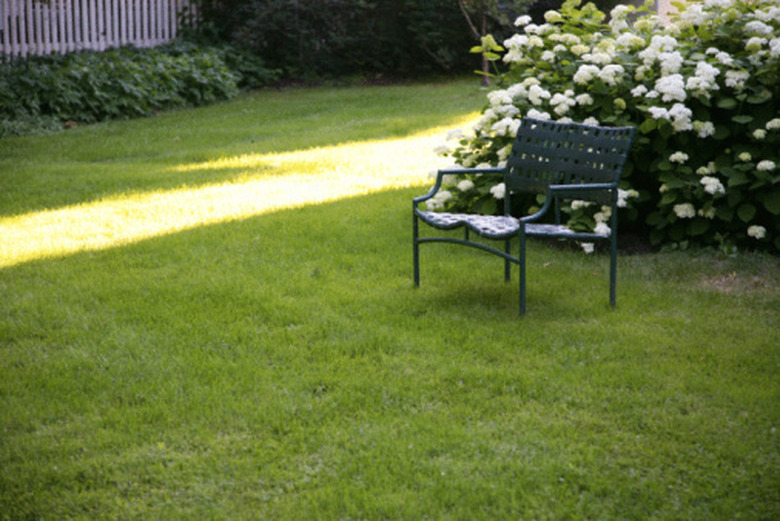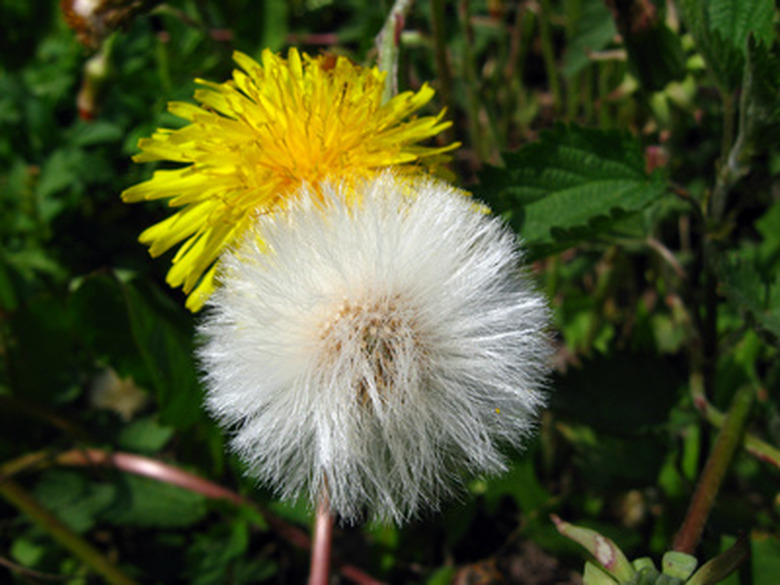Ingredients In Scotts Weed & Feed
Although Scotts rebranded its fertilizer/herbicide combination, homeowners still use the "weed-n-feed" moniker when referring to Scotts Turf Builder With PLUS 2 Weed Control. The Scotts Co. also altered the original Scotts Weed and Feed 22-3-3 formulation slightly, removing dicamba, an herbicide, and sulfur. Although Scotts and many other fertilizer companies still offer fertilizer/herbicide products, researchers, governments and environmental groups have concerns about the effectiveness and detrimental impacts of weed-n-feed combinations.
Fertilizers
Scotts Turf Builder With PLUS 2 Weed Control is a complete fertilizer. Complete fertilizers include all three major nutrients — nitrogen, phosphate and potassium. Scotts adds urea as a source of nitrogen, boosting quick blade growth. Ammonium phosphate encourages strong root development, while potassium chloride releases potassium, a nutrient important to new growth. Keep in mind that your lawn may not need additional fertilizer, and adding a weed-n-feed product to your regular routine might contribute to fertilizer runoff and groundwater contamination. Test your soil before fertilizing, clean up any spills and follow directions carefully.
- Although Scotts rebranded its fertilizer/herbicide combination, homeowners still use the "weed-n-feed" moniker when referring to Scotts Turf Builder With PLUS 2 Weed Control.
- The Scotts Co. also altered the original Scotts Weed and Feed 22-3-3 formulation slightly, removing dicamba, an herbicide, and sulfur.
Pesticides
Scotts Weed and Feed uses a combination of 2,4-dichlorophenoxyacetic acid (2,4-D) and 2-(2-Methyl-4-chlorophenoxy)propionic acid (mecoprop) for weed control. While 2,4-D breaks down relatively quickly, having a half-life of seven to 10 days, the slower-acting mecoprop may remain active for two months or more and is water soluble, making it a groundwater contamination risk, according to the Extension Toxicology Network. Grasses metabolize these herbicides. Broadleaved weeds, however, suffer the full effects. Your ornamental plants may have roots extending under the lawn, absorbing herbicides that percolate through the lawn and into the underlying soil. If you have ornamental plants surrounding your lawn, use a spot weed treatment instead of applying herbicides over the entire lawn.
Concerns
Health Canada, a department of the Canadian government responsible for consumer safety and environmental protection, released a statement restricting sales of fertilizer/herbicide combination products. After December 2012, retailers will not sell weed-n-feed products in Canada. Health Canada stated that the decision "is not based on the health or environmental risk assessments but rather the nature of combination products." Using a combination product often forces homeowners to apply herbicides where and when they are not needed, the agency said.
- Scotts Weed and Feed uses a combination of 2,4-dichlorophenoxyacetic acid (2,4-D) and 2-(2-Methyl-4-chlorophenoxy)propionic acid (mecoprop) for weed control.
- Health Canada, a department of the Canadian government responsible for consumer safety and environmental protection, released a statement restricting sales of fertilizer/herbicide combination products.

